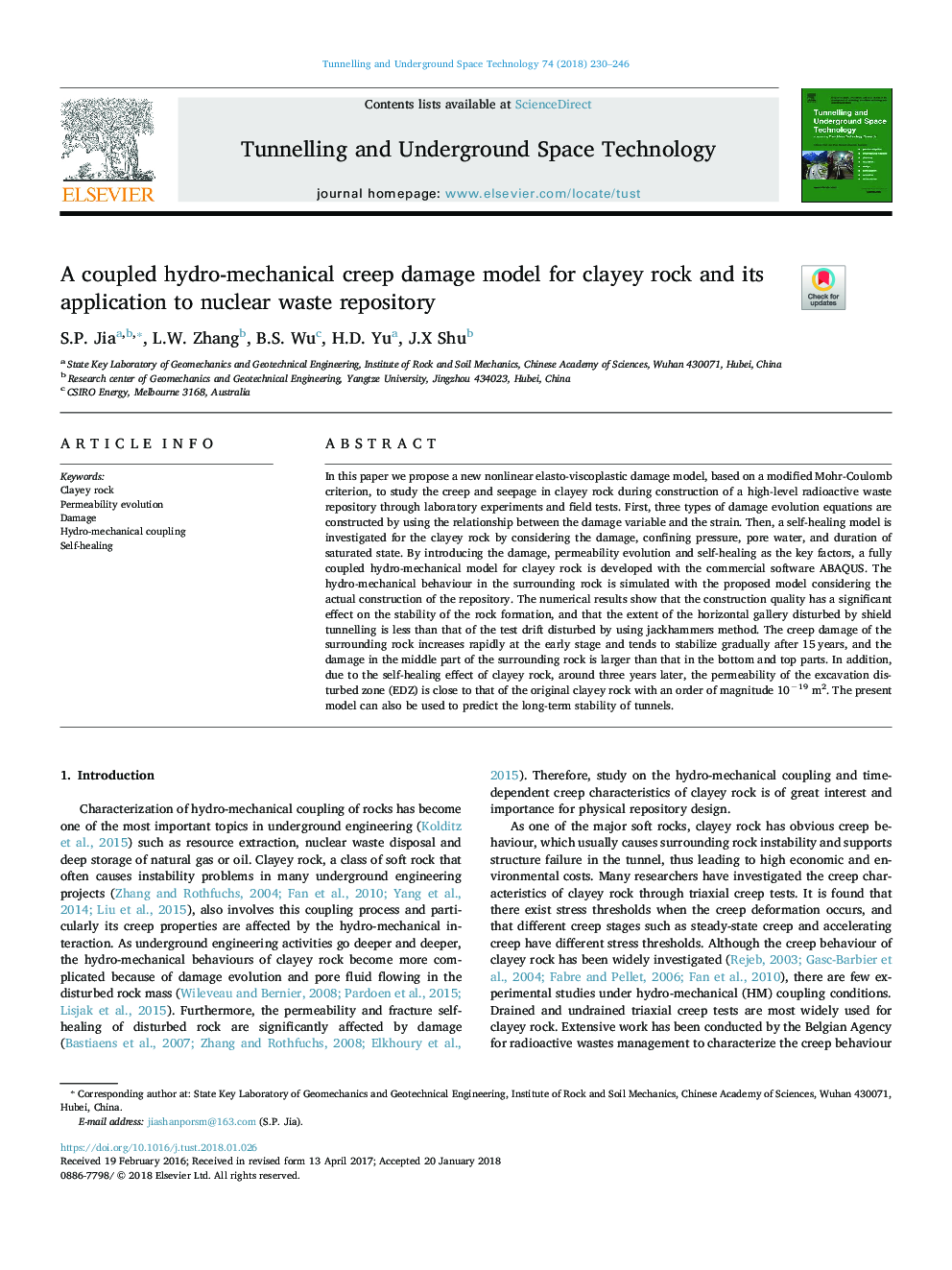| Article ID | Journal | Published Year | Pages | File Type |
|---|---|---|---|---|
| 6782698 | Tunnelling and Underground Space Technology | 2018 | 17 Pages |
Abstract
In this paper we propose a new nonlinear elasto-viscoplastic damage model, based on a modified Mohr-Coulomb criterion, to study the creep and seepage in clayey rock during construction of a high-level radioactive waste repository through laboratory experiments and field tests. First, three types of damage evolution equations are constructed by using the relationship between the damage variable and the strain. Then, a self-healing model is investigated for the clayey rock by considering the damage, confining pressure, pore water, and duration of saturated state. By introducing the damage, permeability evolution and self-healing as the key factors, a fully coupled hydro-mechanical model for clayey rock is developed with the commercial software ABAQUS. The hydro-mechanical behaviour in the surrounding rock is simulated with the proposed model considering the actual construction of the repository. The numerical results show that the construction quality has a significant effect on the stability of the rock formation, and that the extent of the horizontal gallery disturbed by shield tunnelling is less than that of the test drift disturbed by using jackhammers method. The creep damage of the surrounding rock increases rapidly at the early stage and tends to stabilize gradually after 15â¯years, and the damage in the middle part of the surrounding rock is larger than that in the bottom and top parts. In addition, due to the self-healing effect of clayey rock, around three years later, the permeability of the excavation disturbed zone (EDZ) is close to that of the original clayey rock with an order of magnitude 10â19 m2. The present model can also be used to predict the long-term stability of tunnels.
Related Topics
Physical Sciences and Engineering
Earth and Planetary Sciences
Geotechnical Engineering and Engineering Geology
Authors
S.P. Jia, L.W. Zhang, B.S. Wu, H.D. Yu, J.X Shu,
